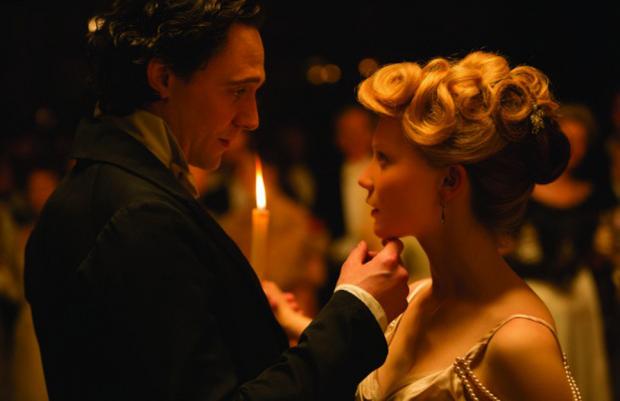Fin de Siècle Buffalo: Crimson Peak
Given the amount of attention that gets paid to even the smallest movie that trains a camera lens on our city, wouldn’t you think you would have heard before now that one of the biggest films of the year was set largely in Buffalo?
I’m talking about Crimson Peak, the newest from Guillermo del Toro, who at his best is probably the most stylish and intelligent filmmaker working in the horror-fantasy genres: Pan’s Labyrinth, The Devil’s Backbone (though on the other hand Pacific Rim).
What del Toro had in mind here when he and long-time collaborator Matthew Robbins were working on the script was a new version of the Victorian era gothic mystery romance. Think Rebecca and Dragonwyck. Before proceeding to the decaying British mansion where the main part of the story is set, they needed an American city for a contrasting opening sequence, a city that in 1901 represented new wealth and an optimistic view of the future.
Where else but Buffalo?
The reason you never heard about this (aside from the studio’s indifference in promoting the film in the city where a third of it is set—I tried, folks) is, of course, that none of Crimson Peak was actually filmed in Buffalo. Del Toro put substantial effort into building a Gothic mansion in Toronto, but for the Buffalo scenes he made do with interiors and, as far as I can tell, a few exterior shots built around photos of Delaware Park, the Connecticut Street Armory and Forest Lawn Cemetery. If what we see in the movie isn’t those locations, it seems at least to be based on them. The same with the exteriors of several houses belonging to wealthy industrialists: if they’re not actual local buildings, they’re similar enough to indicate that the production designer at least came here to take a look around. (Which is more than the people working on Bruce Almighty ever did.)
Nor is that the only thing the production department gets kudos for. Everything in Crimson Peak looks magnificent, authentic and detailed, from the sets to the props to the costumes. It’s a movie that coasts a long way simply on how marvelously grand it all looks, even when the setting is an ancient house with a rotting roof that lets the snow into the main hall.
Crimson Peak is the story of Edith (Mia Wasikowska), only child of a widowed Buffalo businessman and financier. The early death of her mother and a vision of her mother’s ghost have left her bookish and solitary, yearning to be a writer. She falls in love with Sir Thomas Sharpe (Tom Hiddleston), a penniless British baronet trying to raise money to fund a clay-digging machine he has invented. Her father likes neither the young aristocrat nor his dark sister Lucille (Jessica Chastain). But his unexpected death removes any objections, and before you know it Edith is married and moving into the Sharpe family’s ancestral home, a magnificent Cumberland estate in partial ruin that Thomas and Lucille hold onto simply because that’s what the nobility does.
That Edith, her rich father’s sole heir, doesn’t smell a rat in any of this, or the fact that Thomas won’t consummate the marriage out of respect for her recent bereavement, we accept because, well, that’s what the heroines of Gothic stories do. I kept telling myself that the movie was undoubtedly headed somewhere interesting because it couldn’t possibly be as obvious as it seemed.
I gave up on that hope around the time that Lucille and Thomas started feeding frail Edith a special medicinal tea. Yes, it’s bitter, but it’s good for you—drink it all up.
From there on in, Crimson Peak goes exactly where you will expect it to go. There’s nary a plot turn here that wasn’t old hat by the time King Edward took the throne. All that distinguishes it is a climax so ridiculously violent that it seems del Toro felt he had to square up with people who bought their tickets expecting a horror movie. It will be too late for them, and all the gore is likely to do is spoil the movie for those viewers who might otherwise enjoy its “old-fashionedness.” (Though they’re given fair warning 30 minutes into the movie by the excruciatingly nasty demise of Edith’s father.)
Del Toro resists the temptation to camp things up a bit with the character of Lucille, though Chastain seems to be straining to go in that direction. There may not be a lot of call for a new Dame Judith Anderson, but if ever there is this is your gal. She’s the one twinkle of fun in a movie that otherwise wants to recreate a beloved genre but has no idea how to breathe new life into it, aside from dressing it up in the best that money can buy.

